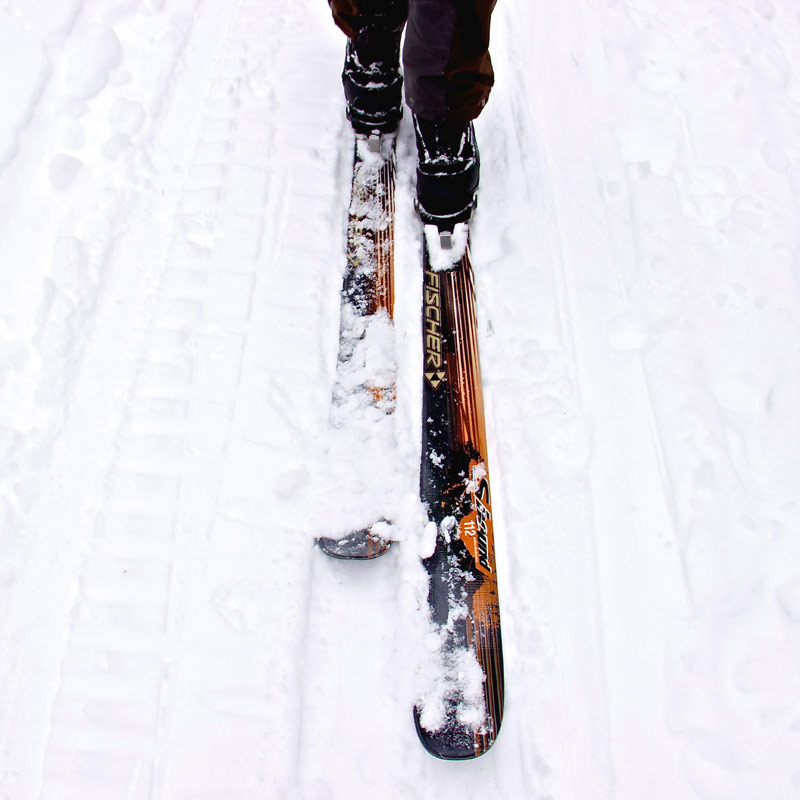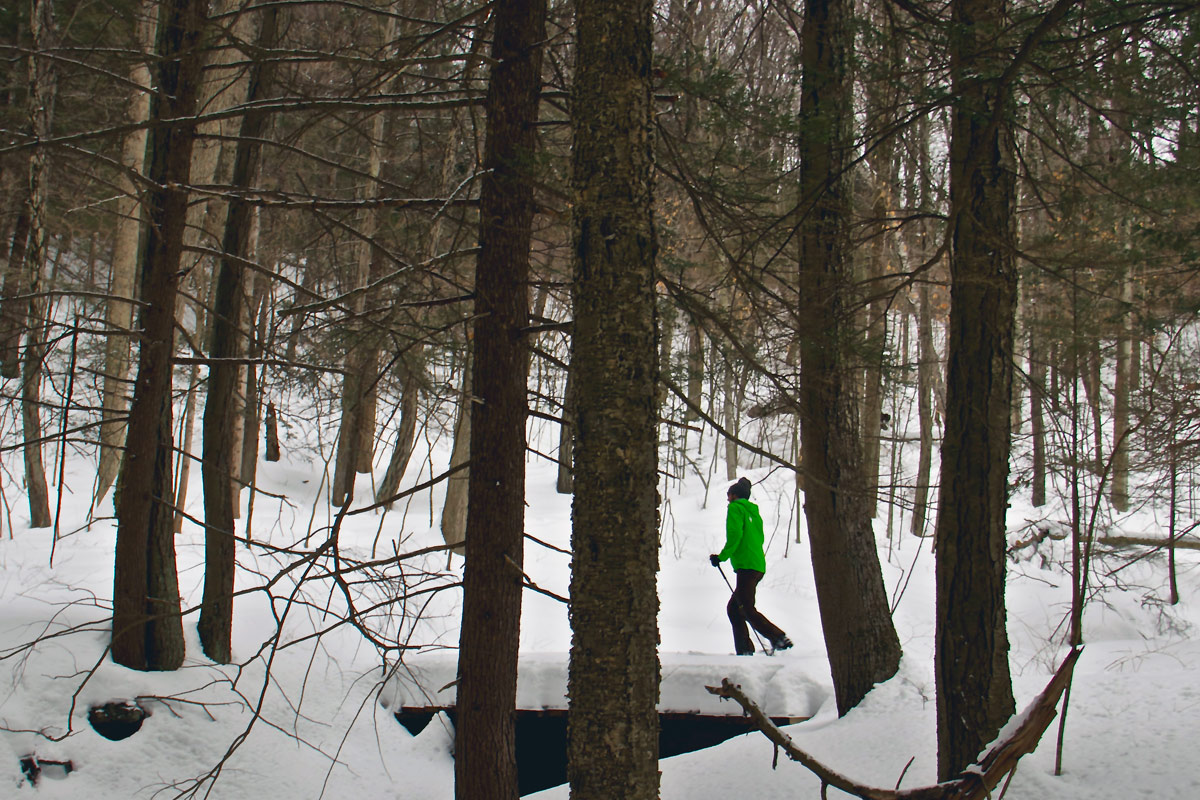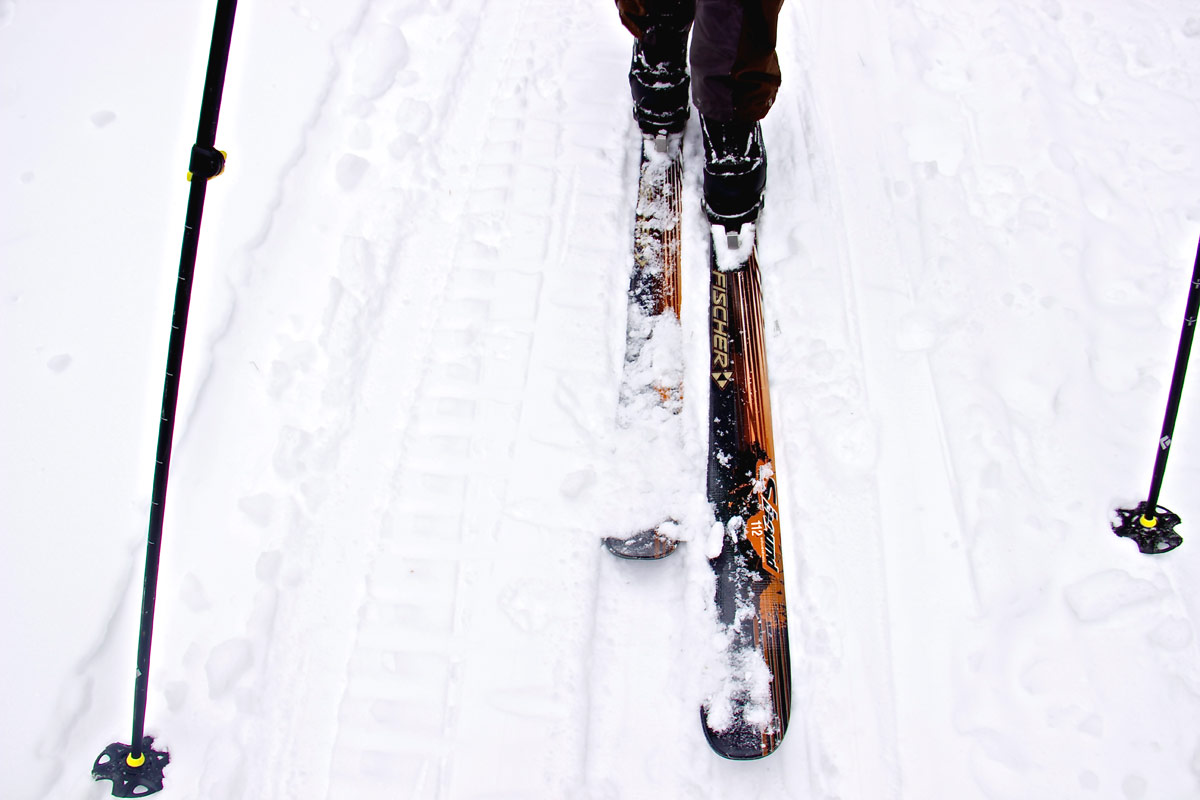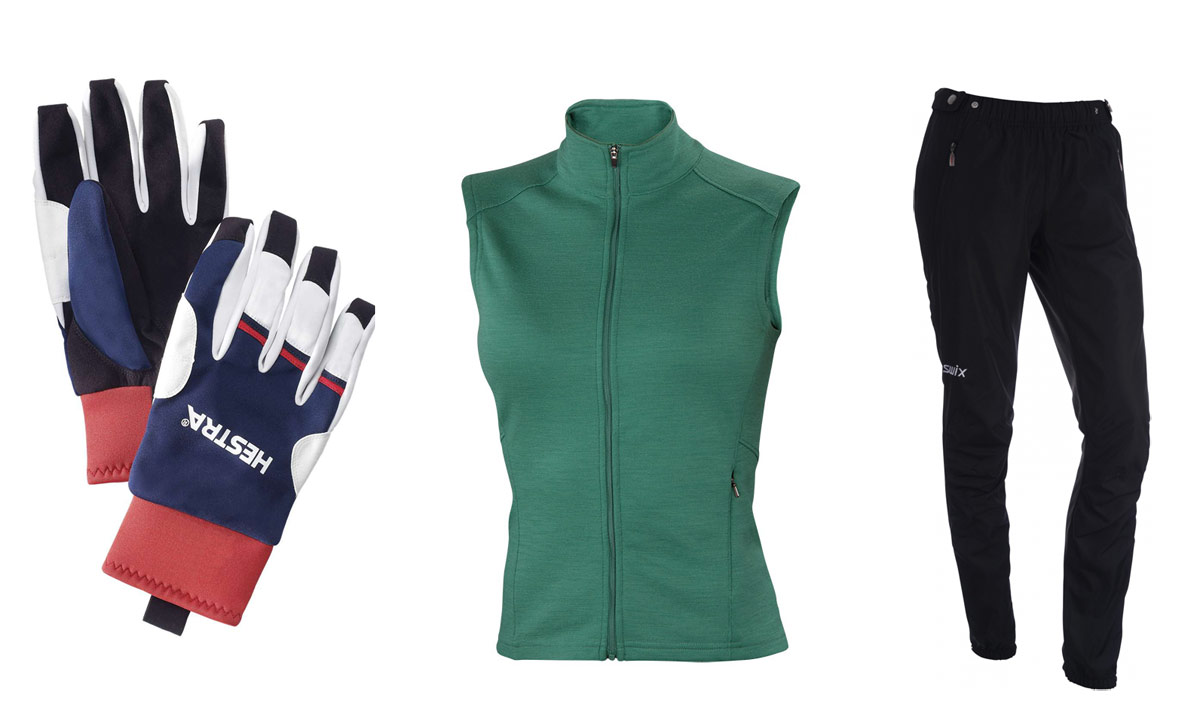Nordic Skiing: The Basics
Where to go and what you need to get started with this low-impact, healthy activity

As the Nordic World Championship draws to a close in Falun, Sweden, you don’t have to have a designated Nordic center in your backyard to strap on your skis. Cross-country skiing is a versatile sport for the transitional seasons. From the traditional striding method or full-body workout skate skiing, nordic skiing is a healthy, quiet way to spend time outdoors—think of it as trail running for the snowy months. While the technicality of gear here runs the gambit from casual to excessive, we focused on the entry level perspective. Here are some basics to get you started and out enjoying the snow while it lasts.

Where To Go
Across the US (with even greater numbers in Europe) cross-country ski centers are the ultimate nordic destinations, with regular trail grooming, maintenance and even gear rental. If you’re not near a nordic hotbed, you can still enjoy the joys of skinny skis. Unlike downhill skiing, you’re only limited by your imagination and snow cover—especially with increasingly popular touring skis. Finding trails where snowmobiles go is a great start, and any trail that is being used for snowshoes should be sufficiently packed for skiing. Also rail trails and bike paths are often winter highways for skiers. Not far from New York CIty is Mohonk Mountain, which is a nice option for beginners to learn basic nordic technique. For those seeking a challenge (and adventure), breaking one’s own trail is taxing to the hip-flexers, but ultimately rewarding.

Skis and Gear
Choosing the optimal cross-country skis and boots depends as much on the level of the skier as it does the type of skiing and snow conditions. For well-groomed trails, almost any nordic ski can work, although most tracks are groomed for 60 to 70 mm width skis and often do not allow for metal-edged skis. So a narrower, more rigid and lightweight ski is best. Rossignol’s selection of nordic skis spans super fast lightweight skate skis to wider, trailblazing backcountry sticks.
When skiing on groomed areas, a lighter more flexible boot will provide ideal movement. For non-groomed areas having a scaled ski or skins is crucial. Fischer’s S-Bound line is a great place to start, if you intend to break trail. The Line starts at 89 width and goes all the way up to 109 which will pack the most surface snow. These skis have “scales” that are on the ski’s base allowing the ski to stick rather than slide for climbs while reducing wax maintenance. A heavier boot such as Fischer’s Offtrack boots are suggested for stability of the ankle. Just make sure to get the correct binding.
Any pole will work, but the lighter the better for groomed areas and a tougher pole with larger baskets is better for deeper backcountry trips. Nordic poles should be taller than downhill varieties, reaching around your chin for measurement. Komperdell’s Classic lineup offers a variety of steady introductory poles to get you through the trail.

Clothes: Top to Bottom
When nordic skiing, there’s no question you’ll work up a sweat. Despite sub-freezing temperatures, the body warms up after a few kilometers even if you’re going out at an easy pace. Therefore, it’s best to keep an eye on the weather and always dress in layers. With both internal and external temperature fluctuations at hand, we opted for versatility in our kit.
If you start with a solid base layer, you will stay warm and comfortable. The Skins Thermal Compression long sleeve is a great first layer. Once you get going, moisture management is critical, especially if you’re ascending—expect to lose heat on the way down. Having a vest like the Ibex Shak is usually perfect with a thermal once your core warms up.
For the lower extremities, a solid moisture-managing first layer is just as important as up top. The North Face’s winter warm tight is a comfortable yet high performance option. On top of this layer, we found the Swix Universal Tour pant allows optimal movement and protection from the elements. Two-way side zippers are great for cooling down and quick changes after skiing. Finally, fitted gloves are a key piece of gear for nordic skiing. Hestra’s Windstopper Race Trackers are slim, warm and flexible.
Trail images by Katharine Erwin, product images courtesy of respective brands












